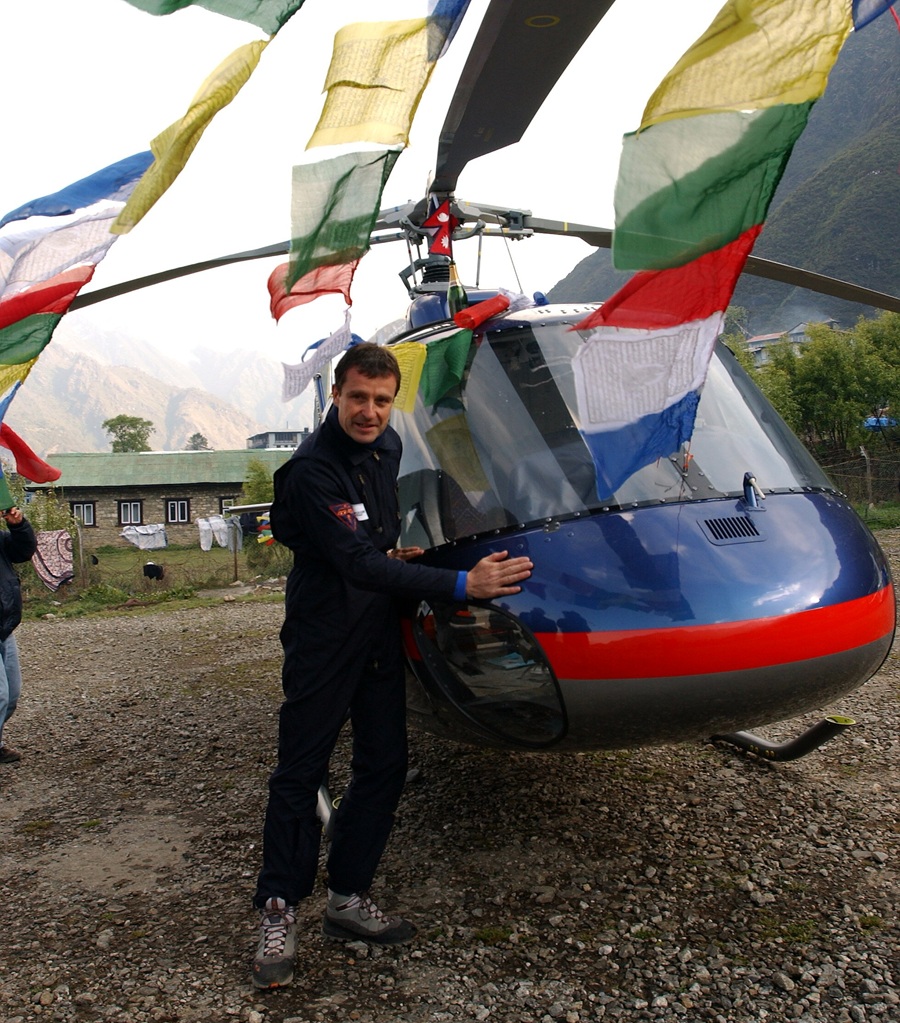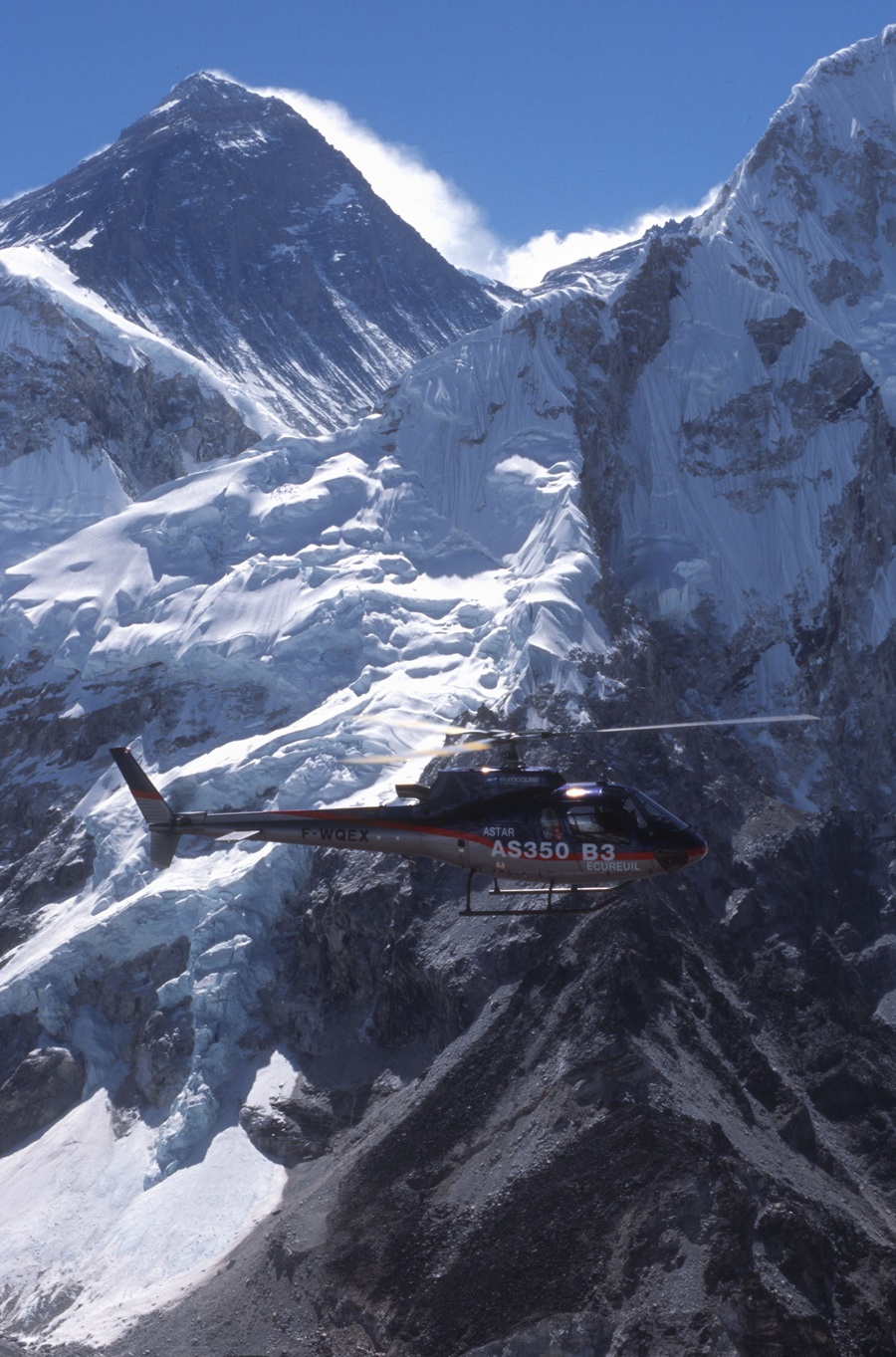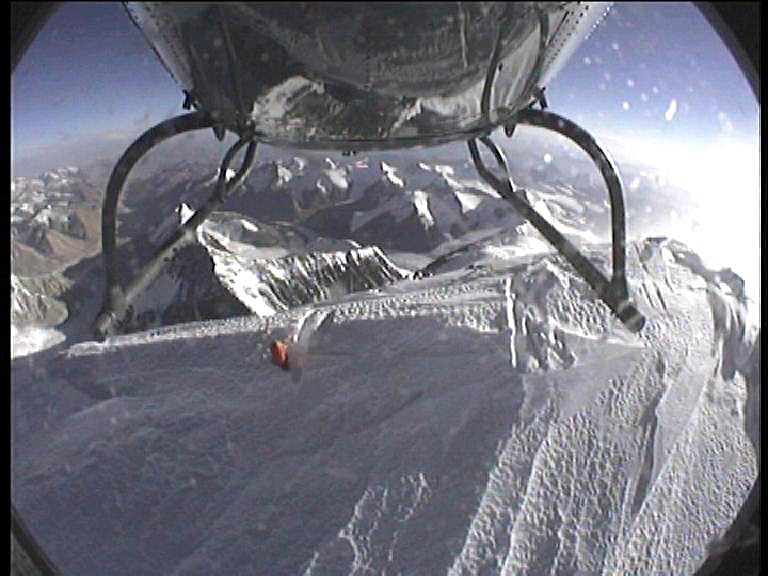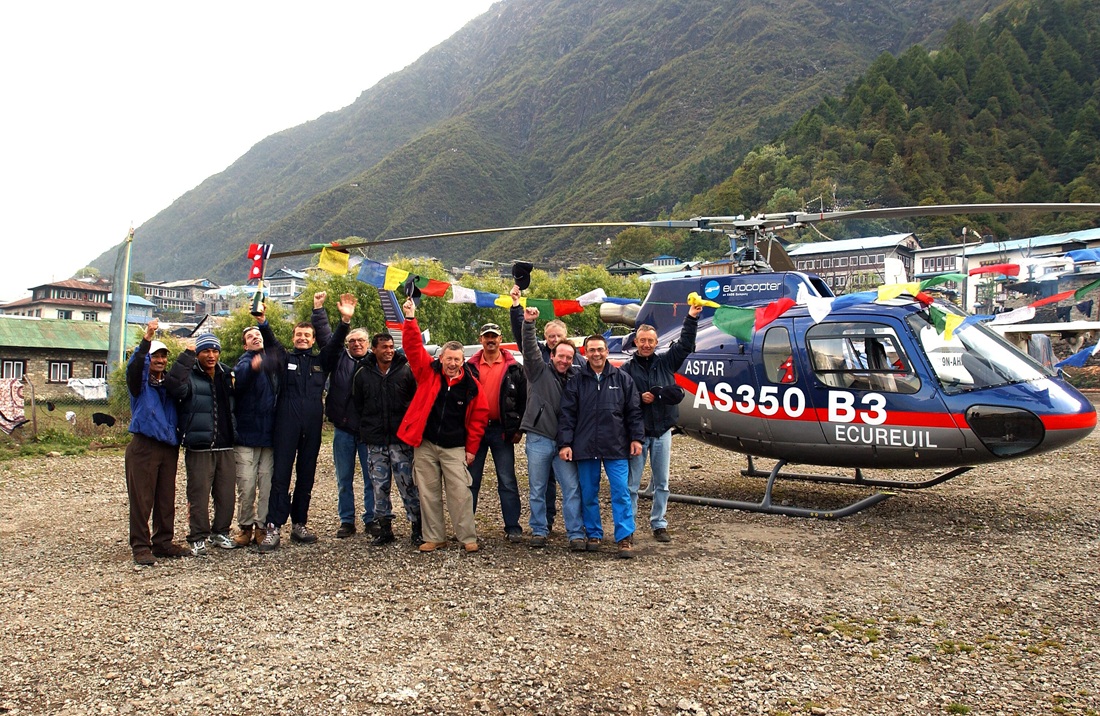On top of the world: 20th anniversary of Delsalle’s helicopter record
20 years ago, on 14 May 2005, French pilot Didier Delsalle took a helicopter to the top of the world and gained the FAI record for highest take-off - from the peak of Everest at 8,848m.
After Jean Boulet made his FAI absolute altitude record in 1972 by reaching 12,442m in the Aérospatiale SA 315 Lama, certain members of the helicopter industry in France began to ponder the possibility of putting an aircraft to the ultimate test of landing on the world’s highest mountain.
The idea took three decades to come to life. It was 48-year-old test pilot Didier Delsalle who was destined to take on the infamous Himalayan turbulence and touch down on the highest peak on the planet, and a commercially available Eurocopter Ecureuil AS 350 B3 was chosen for the job. Lightweight and designed for high altitude performance, a customer owned model was borrowed and stripped down for the test runs in Istres, France.
Official video from Airbus Helicopters
The challenge of Everest
After consulting with the climbing community about the optimal timing to carry out the mission, it was decided that May 2005 would be the target month to carry out the ambitious project.
The main challenges would be the reduced oxygen and atmospheric pressure as well as the high winds that blast the iconic summit. At around 9000m, as the air density decreases, the atmospheric pressure reduced by up to a third of that at sea level. The rotor performance would not be impacted by this, however the motor power was anticipated to reduce by two thirds. Other considerations included the sub-zero temperatures and the weight of the aircraft.
In May, the jet streams around the summit would give lower than average wind speeds, giving a window of opportunity for the record attempt. Plans were put into action.

making Preparations
The team stripped the Ecureuil of its comforts and electronics, leaving one seat and one radio. Delsalle himself lost 7kg in preparation.
Test flights took place at Istres, a month prior to the expedition to the Himalayas. Delsalle darted up to 3,000 then 6,000 and 9,000m altitude faster than anyone ever before, taking three FAI World Records for Time to climb to a height on 14th April 2025. These records remain unsurpassed.
The green light was given, and the helicopter and team headed to Lukla to set up camp.

“The mystery chopper”
Made ready for its adventure and blessed by a monk from a local monastry, the helicopter was taken on reconnaissance flights around nearby mountains for Delsalle to get a feel for the conditions. Climbers, hikers and sherpas reported seeing a “mystery chopper” at high altitudes.
Flying with windows open to stop the inevitable steaming up, and dressed in several warm layers beneath his flying suit, Delsalle also wore his oxygen mask – his lifeline at such high altitudes. These test runs allowed him to get used to the physical conditions he would face, and to understand the atmospheric particularities of the Himalayan range. The experienced pilot's skills were put to the test as extraordinarily strong and disconcerting upwards and downwards currents pulled his aircraft around.
Delsalle began to feel himself “rejected” by the mountain, but after a period of bad weather passed through the area, the team were ready to take advantage of the fact there would be no climbers within 1000m of the summit.

Record day
Rising early on 14th May to take advantage of lighter winds in the morning, Delsalle took off. Rising directly upwards, he reached the same altitude as the legendary peak according to the strict instructions provided by the cartographer. Feeling himself transported by the wind, he made a delicate approach at a 45 degree angle. The mountain was allowing him to proceed, albeit against 93km/h winds and -33˚C temperatures.
The FAI record guidelines stated that the aircraft must land for two minutes in order to make the official world record. Finding the GPS marked summit, Delsalle was unsure as to what conditions lay below him: soft snow, rock, sheer ice? On the knife-edge ridge, he managed to lodge the port skid into the snow and push in, landing for not 120 seconds, but 230: three minutes and 50 seconds, as captured on the camera mounted on the Ecureuil’s belly.

In an interview with Planet Aerospace magazine after the trip, Delsalle reported that “(I) felt a flow of warmth and happiness engulf me even though my hands were frozen.” The mountain had accepted him.
Returning to the landing strip after a 58 minute flight, the team celebrated Delsalle’s accomplishment. Until they were unable to retrieve the data recording… So the following day, a second successful journey to the top of the world was made, this time with Delsalle wedging the helicopter’s nose into the snow.
In fact, the data had registered for the first attempt, and so the FAI World Record for Highest take-off in a helicopter – at 8848m – has rested under Delsalle’s name since 14 May 2005.
"To reach this mythical summit (...) seemed to be a dream; despite the obvious difficulties of the target to be reached, the aircraft demonstrated its capability to cope with the situation (…), sublimated by the magic of the place”.
- Didier Delsalle, FAI world record holder
- Delsalle participated in an interview to mark the 20th anniversary of the record. Read it here.
- See more images

Image credits (c) Airbus Helicopters - Photo: Patrick Penna, May 2005, except image from helicopter camera of Everest peak.

